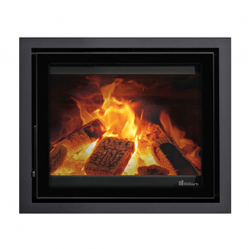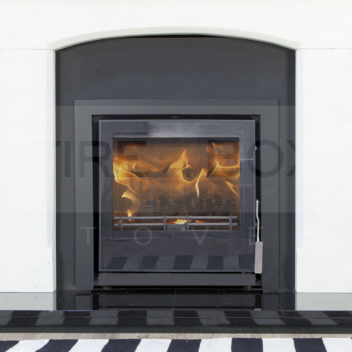Technical Details
| Product Title | Mendip Christon Inset 550 SE with 4 sided frame, 4.8kW, ECODESIGN Read |
|---|---|
| Product Keyword | Mendip Christon Inset 550 SE, 4 sided frame, 4.8kW stove, ECODESIGN Ready, Inset woodburner |
| Energy Efficiency | A |
| SIA Ecodesign Ready | Yes |
| Output (Nominal) | 4.8kW |
| Output (Maximum) | 7kW |
| Smoke Control (DEFRA) | Yes |
| Boiler Stove | No |
| Colour | Black |
| Flue Outlet Size | 125mm - 5in |
| Fuel | Multifuel |
| Height | 550mm |
| Width | 550mm |
| Depth | 360mm |
| Nominal Output (Range) | 3kW - 5kW |
| Width (Range) | 500mm - 600mm |
| Nett Efficiency (%) | 77.8 |
| Max log length | 400mm |
| Distance to Combustibles (Side) | 200mm |
| Distance to Combustibles (Rear) | 200mm |
| Style | Modern / Contemporary |
| Centre of Flue to Rear | 105mm |
| Distance to Combustibles (Top) | 375 |
| Direct Air Kit Available | Yes |
| Convector or Radiant | Convector |
| Height (Range) | 500mm - 600mm |
Product Description
Mendip Christon Inset 550 SE with 4-Sided Frame
Product Description
The Mendip Christon Inset 550 SE is a contemporary and stylish inset wood burning stove that offers a blend of modern design and eco-friendly combustion. Designed to fit seamlessly into a variety of interior spaces, this 4.8kW heat output stove meets the rigorous ECODESIGN standards, ensuring reduced emissions and higher efficiency. The inclusion of a 4-sided frame provides a clean and integrated look perfect for any modern living space.
Key Features
- Heat Output: 4.8kW – ideal for small to medium-sized rooms
- ECODESIGN Ready: Meets the latest standards for efficiency and emissions
- 4-Sided Frame: Provides a sleek, built-in appearance
- Contemporary Design: Fits seamlessly into any modern interior
- Inset Installation: Designed to be built into the wall for a minimalist look
- Clean Burn System: Ensures maximum combustion efficiency and minimal waste
- Airwash System: Keeps the glass door clear for an unobstructed view of the flames
- Constructed from High-Quality Materials: Ensures durability and long-lasting performance
- Easy to Operate: User-friendly controls for a hassle-free experience
File Downloads
Reviews
Inset Stoves > 5kW and under Inset Stoves

5kW and under Inset Stoves
Inset stoves are designed slightly differently to freestanding stoves in that they are designed to be built into the wall or chimney breast, leaving only the front of the appliance visible. They are a great option for rooms where floor space is very limited, or for creating a more minimalistic look. Often with large glass windows to enjoy the full effect of the flames, these stoves are just as efficient as a 5kW or under freestanding model but without the same demand for space.
Our extensive range of 5kW and under inset stoves will provide ample choice, regardless of the style or size required. We have a large variety of 5kW and under inset stoves including wood only and multifuel models, as well as portrait or landscape designs to help match the space available in your home. Our 5kW and under inset stoves are also available in modern or traditional designs, as well as some more neutral designs, allowing you to achieve the perfect focal point in any room.




